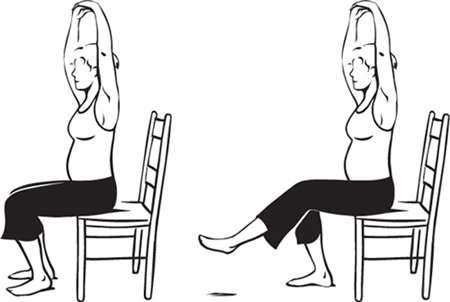7. You Should Also Know
Sugar in Your Urine
Sugar in the urine is called glucosuria.
It’s common during pregnancy, especially in the second and third
trimesters. It occurs because of changes in sugar levels and how sugar
is handled in the kidneys, which control the amount of sugar in your
system. If extra sugar is present, you will lose it in your urine.
Many healthcare providers test every
pregnant woman for diabetes, usually around the end of the second
trimester. Testing is important if you have a
family history of diabetes. Blood tests used to diagnose diabetes are a
fasting blood-sugar test and a glucose-tolerance test (GTT).
For a fasting blood-sugar test,
you eat a normal meal the evening before the test. In the morning,
before eating anything, you go to the lab and have a blood test done. A
normal result indicates diabetes is unlikely. An abnormal result (a
high level of sugar in the blood) needs further study.
Further study involves the glucose-tolerance test (GTT).
Again you must fast after dinner the night before this test. In the
morning at the lab, you are given a solution to drink that has a
measured amount of sugar in it. It is similar to a bottle of soda pop
but doesn’t taste as good. After you drink the solution, blood is drawn
at certain intervals, usually 30 minutes, 1 hour and 2 hours, and
sometimes even 3 hours. Drawing blood at intervals reveals how your
body handles sugar. If you need treatment, your healthcare provider can
devise a plan for you.
Teen Pregnancy
Teen pregnancy impacts our society in many ways and costs the United States about $7 billion each year. Teen pregnancy
is defined as pregnancy in young women between the ages of 13 and 19
years of age. Young women in the 18- to 19-year-old range have the
highest pregnancy rate among teens. The United States continues to have
the highest rates of teenage pregnancy/births in the western world.
Some ethnic groups in our country are at higher risk.
Teenage births have dropped by nearly a
third since the early 1990s. Some experts believe this drop in number
has occurred because the overall birth rate in the United States has fallen.
Thirteen percent of all U.S. births are
to teens; 24% of births to unmarried women are to teenage moms. About
65% of all teen pregnancies are unplanned. An unplanned pregnancy is
defined as a pregnancy that was mistimed or unwanted at the time of
conception.
Pregnancy in a teenager can be difficult
for the mother-to-be for many reasons. Many teens do not seek prenatal
care until the second trimester. Many teenage mothers-to-be have poor
eating habits, and often they don’t take their prenatal vitamins. A
large number of teens continue to drink alcohol,
use drugs and/or smoke during pregnancy. In fact, teens have the
highest smoking rate of all pregnant women.
Studies show pregnant teens are often
underweight when they enter pregnancy and often do not gain enough
weight during pregnancy. This can lead to low-birthweight babies. Teen
mothers are also more likely to give birth to premature babies. Other
problems include anemia and high blood pressure. Depression during
pregnancy has also been reported to be higher in teens. Babies born to
teen moms may also have more birth defects.
Sexually transmitted diseases may be a
problem for pregnant adolescents. Over 25% of all cases of STDs
reported every year occur in teenagers.
A teenager who is pregnant will do herself and her baby a favor by paying attention to the following:
• eating a healthy diet
• gaining the correct amount of weight, as determined by her healthcare provider
• not smoking
• not drinking alcohol
• staying away from drugs
• getting early prenatal care
• keeping all her prenatal appointments
• addressing any health care problems immediately, such as taking care of an STD
• following her healthcare provider’s recommendations when dealing with problems
• avoiding all prescription and over-the-counter medicines, unless her healthcare provider tells her to take them
• asking for help when she needs it
8. Exercise for Week 23
Sit on the edge of a chair, and place
both feet flat on the floor. Relax your shoulders, and curve your arms
over your head. Keeping your back straight, hold in your tummy muscles
while you extend one leg out in front. Using your thigh muscles only,
lift your leg about 10 inches off the floor. Hold for a count of 5,
then slowly lower your foot. Repeat 10 times with each leg. Tones thigh, hips and buttocks muscles.
